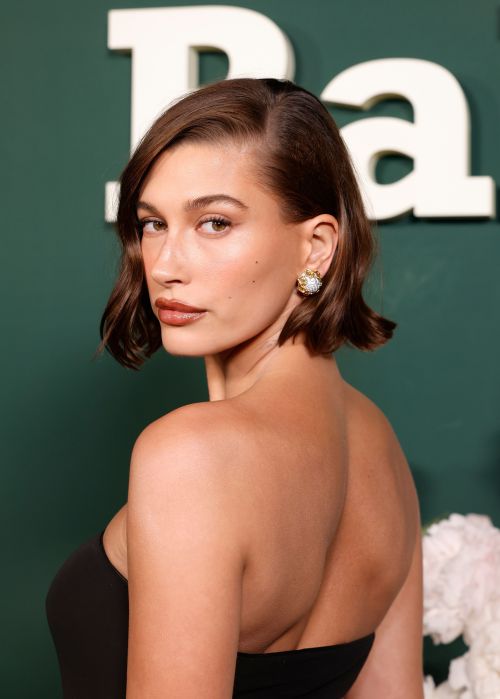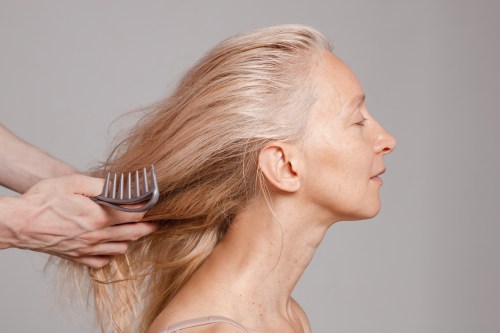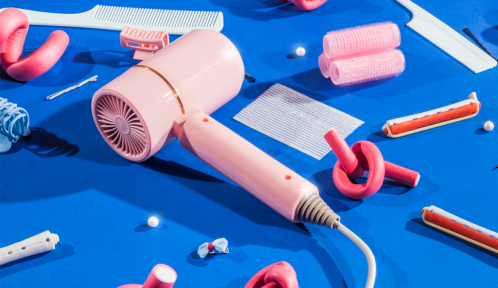How an AI Hair Tool Is Guiding Me Through My Post-Chemo Hair Loss Journey
Myavana is a beauty AI tool that uses hair strand analysis and imaging technology. Here's how it's helping me re-grow my hair after chemo.

History repeats itself. As I laid down for my first PET scan to determine the staging of my Non-Hodgkin’s Diffuse Large B-Cell Lymphoma, all I could think about was my mom being in this exact position two decades ago. Losing a parent at a young age drives you to seek connections, searching for proof that you’re similar to them—do you apply perfume the same way, laugh at the same things? Anything to confirm, ‘Yes, I’m their kid.’ This was one similarity I knew neither of us wanted for me. Holding back tears, I told the tech I was ready to stay perfectly still for the next thirty minutes, all the while wondering just how similar our battles would be.
A week of agony later, during which I burst into tears immediately upon waking up, my husband and I found ourselves seated in front of my oncologist. There were plenty of questions: How hard will this be? Will I have to stop working? How does chemotherapy impact fertility? And, what about my hair?
I’ve had long, thick wavy hair for most of my life. Throughout high school, college, and moves across the country, it has been my plus one—either naturally free-falling or atop my head in a massive, messy bun. And as much as I love it, my reason for getting so emotional at the thought of no longer having it was less vanity and more that it would be a neon sign flashing, “I’m sick!”
For as long as cancer patients have been receiving chemotherapy, most have been left hairless by the treatment—from their scalp to their brows, legs, lashes, etc. The reason is that some types of chemotherapy, like the R-CHOP regimen for lymphoma, indiscriminately attack fast-growing cells. Cancer cells are fast-growing, but so are hair cells. This is why after just two intravenous chemotherapy treatments, many lymphoma patients find their hair falling out in droves. Some people use cold caps during their chemo infusions, which are essentially helmets filled with a cool gel (15 to 40 degrees below zero) that restrict blood flow to the scalp to reduce the drugs’ reach. Ideally, this process puts hair follicles into a dormant state, which minimizes shedding. However, it’s an expensive method and doesn’t guarantee your hair will be saved.
I opted out of going the cold cap route, and after my second infusion, I handed my husband his clippers and watched my golden locks fall into our tub. By my fourth treatment, both my hair and brows were distant memories. As a beauty writer, I was fortunate to have access to industry leaders, so I reached out to Anabel Kingsley, a trichologist and the brand owner of Philip Kingsley. She immediately created a special chamomile tonic for my scalp and gifted me the entire No Scent No Color line to prevent scalp irritation during my infusions.
More than six months later, when my hair started to grow, I wanted to be the best host to my precious new follicles. If there’s a silver lining to losing all of your hair, it’s that the hair regrowth is “virgin hair”— completely untouched with no chemical or mechanical damage. But the wash, rinse, repeat of cancer is never counting on things to go as planned—most people have a completely different texture, and sometimes color, when their hair grows back. Seeking to regain control and put myself back together, starting with my hair, I knew I needed help before jumping back into my regularly scheduled hair routine.
As fate would have it, an email landed in my inbox about Myavana, an artificial intelligence tool that utilizes microscopic hair strand analysis and AI imaging technology to provide personalized hair-care product regimens from a database of over 3,000 hair-care brands.
“After researching the science of hair and discovering that your hair is as unique as your fingerprint and that there are several variables involved that determine the best products for your hair,” says Candace Mitchell-Harris, the brand’s founder. “I decided to create an algorithm that can match your personal hair profile, needs, and preferences with the products that will help you reach those hair goals and Myavana was born.”
Myavana refers to its process as the “CARE Experience,” which stands for consult, analyze, recommend, and educate. Initially, you receive a pre-labeled envelope with different bags for placing hair from various parts—top left and right, crown, and bottom left and right. Gently pulling a few of my precious strands, I packaged them up and dropped them off in the mail.
Next, you create a profile, upload pictures of your hair, and answer questions about problems you think you’re hair faces and improvements you’d like to see. A few days later, I received an email saying my results were ready. The brand offers a virtual consultation with one of their healthy hair experts to go over your analysis and recommendations, or you can access a portal and view these on your own time.
The analysis includes healthy hair-care plans that contain your product and ingredient recommendations, regimens to follow, styling techniques, and more. You can also be paired with a professional stylist in your local area for your salon visits.
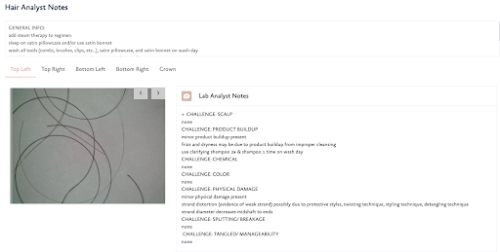
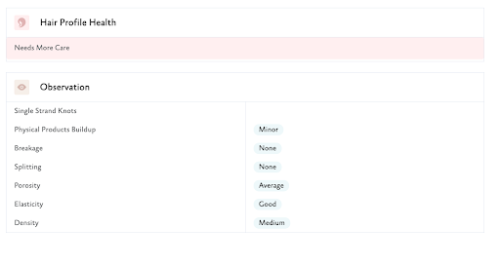
The microscopic hair strand analysis reveals what the eyes can’t see about your hair. It uncovers the condition of your hair, the unique characteristics of the cuticle layer, and health of the strand. “We decided to automate this process through AI technology and machine learning by training thousands of unique images of different hair textures, types, and conditions to easily detect these things from a photo and generate personalized recommendations through our proprietary recommendation system,” explains Mitchell-Harris. This is a service for every hair type and every hair condition, which helped me put trust in the service—after losing my hair, I was only going to willingly pull out strands if I felt confident it was going to be worth it.
The analysis revealed that my strands are in a weakened state with physical damage—small rips and tears along the hair shaft, compromising the outer cuticle layer. Through my personalized recommendations, I discovered the best products to aid in rebuilding my hair—including a sulfate-free shampoo and hydrating styling treatments, like this Aveda Foam.
What I love most about this service is that you can routinely send in your hair to keep track of its health. Myvana also offers a web3 Virtual “Hairquarters,” which provides a way to engage with communities who are facing similar hair journeys. Soon, the brand will release “In The Lab with Myavana,” a weekly series in which hair scientists, analysts, and cosmetologists share discoveries from their strand analysis research.
While Myavana doesn’t necessarily take the place of a trichologist or your stylist, it’s another tool to help give you the full picture of your hair health. Just like I’m not the same person before my diagnosis neither is my hair—we’re both a work in progress, trying to find our new normal. Myavana is an innovative tool that I’ll continue to use throughout my evolving journey to make the most of every new stage I encounter.
Sign Up for Our Daily Newsletter
Get all the latest in wellness, trends, food, fitness, beauty, and more delivered right to your inbox.
Got it, you've been added to our email list.


